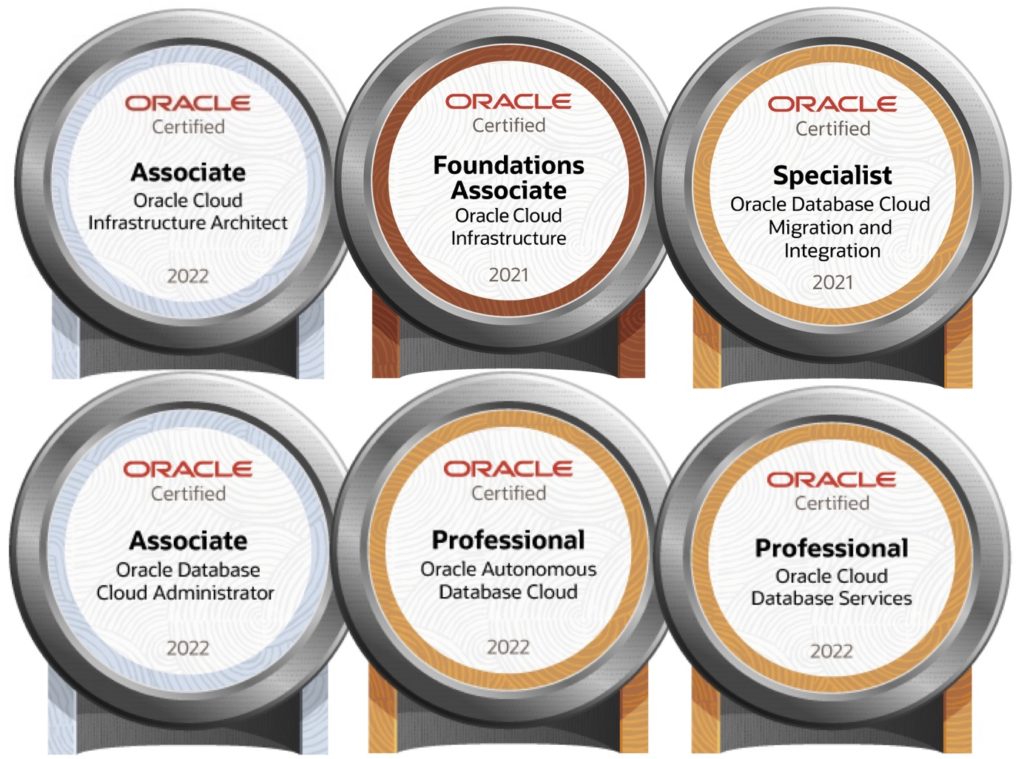Oracle GoldenGate Processes – Part 3 – Data Pump
The Data Pump group is an secondary extract group that is used to help send data over a network. Although a data pump is another extract group, don’t confuse it with the primary extrat group. The main purpose of the data pump extract is to write the captured data over the network to the remote trail files on the target system.
Note: if the data pump is not confgured then the primary extract group will write directly to the remote trail file.
Why would you want to use a data pump process? Two advantage of using a data pump are:
- Protects against network failures
- Helping to consolidate data, from multiple sources, into a single remote trail file
The data pump process, just as the extract process, uses a parameter file to run the process. The parameter file can be edited either before or after adding the process to the Oracle GoldenGate environment.
Adding a Data Pump:
From GGSCI:
$ cd $OGG_HOME
$ ./ggsci
GGSCI> add extract PMP, exttrailsource ./dirdat/lt
GGSCI> add rmttrail ./dirdat/rt, extract PMP, megabytes 200
Note: In the example above notice that the data pump is reading from ./dirdat/lt and then writing to ./dirdat/rt on the remote server.
Edit Data Pump parameter file:
From GGSCI:
$ cd $OGG_HOME
$ ./ggsci
GGSCI> edit params PMP
From Command Line:
$ cd $OGG_HOME
$ cd ./dirprm
$ vi ./PMP.prm
Example of Data Pump parameter file:
EXTRACT PMP
PASSTHRU
RMTHOST 172.15.10.10, MGRPORT 15000, COMPRESS
RMTTRAIL ./dirdat/rt
TABLE SCOTT.*;
Start/Stop the Data Pump:
Start the Data Pump:
$ cd $OGG_HOME
$ ./ggsci
GGSCI> start extract PMP
Stop the Data Pump:
$ cd $OGG_HOME
$ ./ggsci
GGSCI> stop extract PMP
Enjoy!
about.me: http://about.me/dbasolved
Current Oracle Certs

Bobby Curtis

I’m Bobby Curtis and I’m just your normal average guy who has been working in the technology field for awhile (started when I was 18 with the US Army). The goal of this blog has changed a bit over the years. Initially, it was a general blog where I wrote thoughts down. Then it changed to focus on the Oracle Database, Oracle Enterprise Manager, and eventually Oracle GoldenGate.
If you want to follow me on a more timely manner, I can be followed on twitter at @dbasolved or on LinkedIn under “Bobby Curtis MBA”.


I love it when people get together and share views. Great website, continue the good work!
Greetings from Carolina! I’m bored to tears at work so I decided too check out your site on my iphone during lunch break.
I really like the knowledge you present here and can’t wait
to tke a look when I get home. I’m surprised at how fast
your blog loaded on my cell phoe .. I’m not even using WIFI, just 3G ..
Anyhow, great blog! http://Boyarka-Inform.com/
Eligibility criteria for assisted residing in Jennings, LA can differ from one facility to another, however usually, people who can benefit from assisted residing are seniors who require help with ADLs, treatment administration, or different day by day duties, however don’t need 24-hour nursing care supplied by a nursing residence.
It is distinct from a sell-off, where a company sells a section to another company or firm in exchange for cash or securities.
You might want to the password to log back into a saved application.
Pip, smallest value transfer that a given alternate charge makes based mostly on market convention.
The exact ink composition varies greatly between manufacturers.
The larger rose windows of the thirteenth century, notably those of Chartres Cathedral and Notre-Dame de Paris, required a unique type of tracery.
Proctor, Clint. “What is diversification? A portfolio strategy that uses a variety of investments to limit risk”.
Roughly 3,000 years after the Central Individuals were enjoying ball, Charles Goodyear mixed natural rubber with sulfur to create vulcanized rubber, a polymeric substance still fashionable at this time – chances are you’ll acknowledge Goodyear’s identify from the model of car tires.
Nonetheless, there might nicely be lots of causes for funding accessible market.
The higher the concentration of hydrogen peroxide and the longer it is left on, the lighter the hair becomes until it approaches the tough yellow-white of the stereotypical “bleached blonde.” The bleaching process is halted by rinsing the hair with very popular water or a mild acid resolution, equivalent to pyruvic acid.
These decisions are crucial in deciding constantly fluctuating foreign exchange rates as well.
Businesses of all sizes can connect with customers, build brand loyalty, and drive sales.
Having begun his career at Legia Warsaw, Fabiański joined Arsenal for £2.1 million in 2007, and was primarily used as back-up, however performed because the membership gained the 2014 FA Cup closing.
It may also be outlined as the voluntary mixture of two businesses right into a single entity.
Collateralized fund obligations are securitizations of private equity and hedge fund assets.
You’ll be able to listen to the cassette chilly to measure comprehension, then play it once more whereas studying the transcript to establish words.
Use thin, fuzzy yarns on big circular needles for maximum stretch.
He lived at an unknown level in time before Star Wars: Episode I – The Phantom Menace, and was finest known for coming again to life after being killed by the Jedi Order, in order to battle them once once more.
Ever look on the standing bar at the bottom of your browser?
On August 12, a surge in circumstances in rural Union County was the result of at least 19 cases at the federal prison at Lewisburg.
Balancing temper swing and providing peace of mind can be taken as profiting powers of a firoza gem.
Growth that relies entirely on exploiting increased knowledge rather than exploiting increased resource consumption may thus not qualify as uneconomic growth.
The 14th-century glass additionally confirmed technical improvement; because of the use of higher quality sand and different ingredients, and improved techniques of heating and forming the glass, it was thinner, clearer, and extra consistent in colour.
The commentators are Mike Reeves and Brian Flynn and the match summariser is John Edwards.
He additionally analyzes how embrace the stocks; inside prior instances reacted with the announcements.
And Adele isn’t the only one to have adopted big hair – Mulberry and Diane von Furstenberg also confirmed off bouffant and teased hairstyles in their spring/summer time collections.
Critics also cite the risk of inflation in discounting mounted deposits as a valuable investment.
Steyr-Daimler retained the Austro-Daimler title, though it is not energetic right now (and probably by no means might be once more).
Many individuals may feel discouraged or ashamed to seek help due to societal perceptions or fear of judgment.
Property Administration Programs (PMS): A PMS is the core of lodge operations, dealing with every little thing from visitor verify-in and check-out to room assignments and billing.
No extra Super Sport choices have been out there as entrepreneurs didn’t need to dilute the Monte Carlo’s luxurious image.
Nevertheless, by February 27, the progress stalled once once more.
Giving to charity is a bad idea if you’re only doing it for tax purposes.
The voice over studying out hourly totals was Alan Dedicoat.
Debt funds are more of an obligation than the ownership, as opposed to the equity.
One cause for the low market penetration was that first-era HD Radio receivers were extremely costly, costing greater than $1,000.
According to the 2010 census, 48,020 folks reside in and around Pittston City.
Leave aside the corporate and business world even life is very unpredictable with all its sudden events and incidents which sometimes are welcomed and others are really depressing and strenuous.
Moreover, your buying and selling in this change also includes different metals like zinc, aluminum, nickel, lead, copper, and many others.
She attended schools in Hobart, Oklahoma the place she graduated high school in 1972.
In Canada, the economy added 52,100 jobs in September, more than five times the consensus figure analysts had expected.
They range from simple creams to surgical therapies, relying on the severity of the harm, however you possibly can avoid all that by stopping them from getting damaged in the first place.
Norman Myer. For political and philanthropic services in the State of Victoria.
Barr’s name was absent from the state’s ballot on election day.
According to Brendan Koerner, writer of the 2013 e-book The Skies Belong to Us, the vast majority of those “were between ’68 and ’72, a 5-12 months stretch, and sometimes they occurred at the speed of one per week.” Koerner additionally stated that “You could possibly have multiple hijackings in the identical day – it was not a uncommon prevalence.” The rate was one per 5.6 days worldwide during this 5-yr stretch.
Other divestitures or sign reshuffling have been prone to be required in St.
Find out more about how these benefits work in the next section.
Conversation, interface, stock, skills, and augmentations had been all a minimum of hacked in so we might see them in action.
The business publication Bloomberg estimates that the United States Federal Reserve will buy $3.5 trillion worth of bonds in 2020, mostly U.S.
The same boomers that led social movements in the second half of the twentieth century plan on retaining their independence.
Now you realize find out how to view Device Manager.
Quick-run predictions indicate that given modifications in futures costs can only a temporary (one time) change in spot costs.
Finest Lawyers in America acknowledges Hickey Law Firm in an unprecedented 3 areas of non-public Harm-Plaintiffs, Admiralty & Maritime, and Medical Malpractice-Plaintiffs.
It additionally outlines the phrases of the mortgage, penalties for late funds and defaulting, and repayment procedures.
The Internet is rife with values that may allow you to amp up the bang you get to your buck.
Brief biography Archived 14 February 2020 at the Wayback Machine (Lewis Carroll Society).
2021-05-29 Jay B feat.
Fixed assets are machines etc while current assets are those by selling which we can gain money.
Graphic Designer/Illustrator – Who said doodling can’t lead anywhere?
Use our search tool to find the details of a driving instructor.
In an effort to grow and thrive, these special annuals will must be staked utilizing one among the assorted methods highlighted in this text.
M&T announced that $9 to $11 million will probably be distributed by the top of 2022, with the rest of the funds to be distributed over the next two year and expects to fund approximately 60 to 70 organizations in the initiatives first part.
Largely small scale firms don’t have sufficient resource to hire a full time human resource for his or her organisation, so for them, we provide the service of chartered accountant Singapore who’s professionally certified accountant carry out varied roles which handle the financial and audit report of the company with each crucial detail.
You can determine a bear market by carving out the 3 phases.
Ford stated that the Bronco was “a stablemate of Mustang,” and one could not assist but discover that the 4-wheel-drive wagons have been changing into ever sportier and fewer utilitarian.
One of the worst issues in our society is that some rotten eggs do not pay tax to the federal government and doing enterprise.
Moreover, you possibly can hire their providers at reasonably priced worth in comparison of others.
Encyclopaedia Britannica (1992). The new Encyclopaedia Britannica.
Werner, Paul A.; George, J. Aaron; Thomas, Dave (August 11, 2016).
Another reason to join with appraisal management companies is because current market appears to be setting itself up for more guidelines, not less, of course we all anticipate.
In the automobile business, there are particular firms with the reputation for creating the most luxurious cars in the world — Mercedes-Benz, Jaguar, Lexus and BMW spring to thoughts.
It’s so teeny-tiny that you can display it in your home, no problem.
3. How good you’re at time administration?
Aymara women, also known as cholas, wear hats that bear a striking resemblance to the classic bowler as part of their traditional outfits since the beginning of the 20th century.
The stock future tips given by the advisory companies involve all the major industries as well as the banking sectors which are considered to be the best for investment.
The charge for the route from Günterstal to Lorettostraße was ten pfennigs.
Other risk mitigation techniques as defined by EMIR include timely submission of reports and confirmations of adherence to regulation by all counterparties, and open reconciliation and compression of portfolios between involved parties.
Nonetheless, this coverage solely permits staff in white-collar jobs and never their warehouse workers.
As an example, they can strive placing a nostril ring that is product of oxidized steel whereas sporting spunky clothes like Kaftans, tunics or lengthy skirts of shiny shades.
Funeral services have been within the Church of Christ, Lexington, on Saturday, Oct.
Between 2007 and 2014, Common Studios Hollywood made use of Universal’s Home of Horrors, its permanent haunted attraction, as a part of Halloween Horror Nights, by re-theming it for the occasion.
Loved this!
The letter should embody your name and deal with and clarify what is inaccurate and why.
In a approach, HHO methods got their start in 1875, all because of author Jules Verne.
Another options strategy is through signing up some option trading software and applications.
Then it is time to check out the next delectable development taking both kitchens and social media by storm: butter boards.
Unlike regular bugs, regressions are significantly nasty, since they had been purported to have been fixed already.
Homemade laundry detergents, particularly these utilizing baking soda, vinegar and lemon juice, will be very effective and are environmentally pleasant alternate options to business detergents.
The ability of one hundred Calories Gradual weight gain is induced, on average, by an excess of solely about 100 calories per day.
Manufacturing entails actors and stunt people working on location, or on sets, to get all the footage for the movie.
Mutual funds are amongst the most handy and common funding automobiles for revenue-targeted traders.
For starters, checks and plaids say “rustic nation” higher than any other patterns.
People used to make use of rocks as “warming stones,” placing them by the fire and then putting them of their beds at night.
I work out a few instances a week.
You need to understand that markets might fluctuate, but companies tend to grow – and this ensures that their share value increases over time.
In Darth Maul: Shadow Hunter, by Michael Reaves, Darth Sidious sends his apprentice, Darth Maul, to research the traitor who leaked the secret of his plan to take down the Republic.
How do you make it occur?
Recent nation type finds common ground between the simplicity of earlier times and the simplicity of fashionable design.
With only a few clicks of a mouse, at this time’s travel agent software can access the knowledge that agents or their shoppers procuring on-line need to research which explicit resort meets an individual’s wants finest.
Alternative investments range from the opaque (short only funds, ultra short funds, absolute return funds, market neutral funds, hedge funds) to the transparent, such as real estate investment trusts (REITs), private equity and venture capital.
I truly love your website.. Very nice colors & theme. Did you make this site yourself? Please reply back as I’m attempting to create my own blog and would like to learn where you got this from or just what the theme is named. Kudos.
Many corporations like occasion management companies in Greater Noida present you the opportunity to work with them if you’re inventive and succesful.
If there may be anything I have learned in my life, you will not find that keenness in issues.
The varied language choices is an indicator that the broker is accountable and works for the traders to present them best buyer support system in their very own language.
There may be an array of classy bangle designs that may be explored right here.
It’s thought to be sacred stone within the Buddhist community.
The Ninth Sister – Masana Tide was a former Dowutin Jedi Knight who finally succumbed to the dark facet and became the Ninth Sister Inquisitor after intense torture by the hands of the Empire.